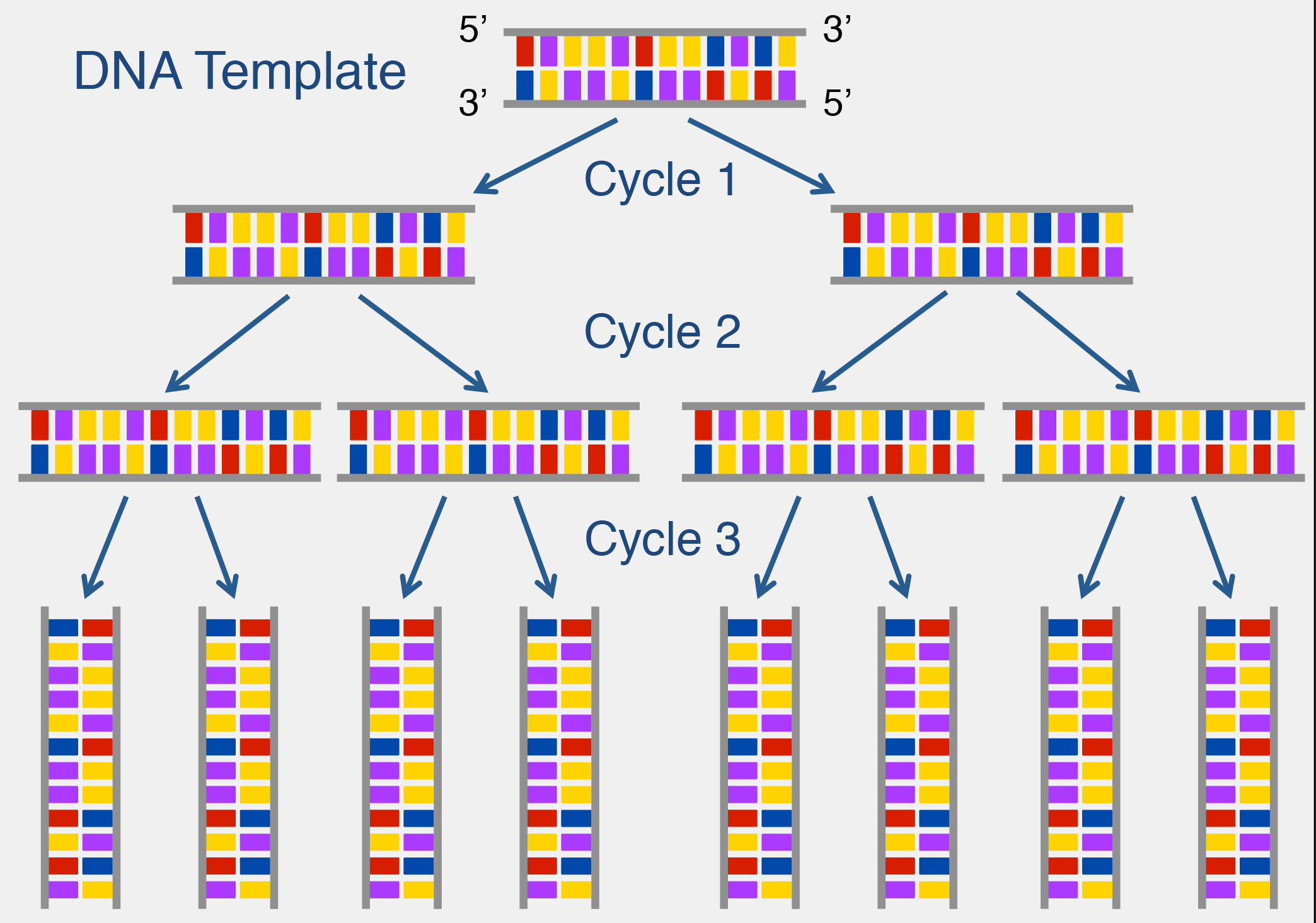
Adapted from: Kendall and Riley (1999).
The Polymerase Chain Reaction (PCR)
The polymerase chain reaction (PCR) is a laboratory technique that replicates deoxyribonucleic acid (DNA). Ideally, one cycle of three steps doubles the amount of a target DNA sequence, and the total number of DNA copies after completion of a cycle is 2n, where n is the cycle number. Reactions are typically run for 25 to 30 cycles (Kendall and Riley, 1999). The efficiency of replication decreases as more DNA is synthesized and reagents needed for DNA synthesis are depleted.
Cycle steps
- Denature the DNA template.
- Anneal oligonucleotide primers. Primers are short sequences of 17 to 24 nucleotides that bind to the DNA target and define the boundaries of DNA to be synthesized.
- Synthesize new DNA.